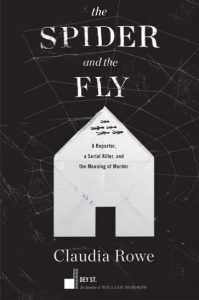Prepare to be thoroughly creeped out.
By Elizabeth Stainton
In the late nineties, an African-American outcast named Kendall Francois murdered eight women, all prostitutes. This string of crimes would be heinous enough, but the truly sickening part is that he hid the bodies in the house he shared with his parents – and his family didn’t notice because of the squalid conditions of the family home.
Meanwhile, Claudia Rowe was floating through life as a reporter, then a stringer for the New York Times. While her family was more affluent than Kendall’s, it also had years of pain and secrets, which Claudia found herself trying to escape by fleeing to Poughkeepsie, New York.
The intersection of the two lives – that of the murderer and the journalist – is what sets this book apart from so many other true crime stories. Rowe does not merely recount Kendall’s crimes, she weaves his family history together with her own upbringing, comparing and contrasting the ways insecurity manifests in each. It is a book as much about herself as it is about her subject.
Rowe has had an impressive journalism career by any standard, and her ability to anchor the story in time and place gives gravitas to a story that might otherwise have turned into a Goosebumps tale. Her meticulous attention to detail and ability to trace the story back multiple generations is a testament to her ability as a reporter.
Part true crime, part memoir, this story is so much more than just cataloging of crimes. Just as Rowe is drawn into Kendall’s web, the reader, too, is drawn in. At the same time, Rowe is also trying to understand Kendall’s motivation, or, as the subtitle alludes to, “the meaning of murder.” As a result, the audience is left to wonder who exactly is the predator and who is the prey.
Read if you loved the Serial podcast or Erik Larsen’s The Devil in the White City.
Gone Girl fans, be advised: it is much more graphic, and not nearly as sexy. Still, The Spider and the Fly remains, as Gillian Flynn called it, “a must read.”

